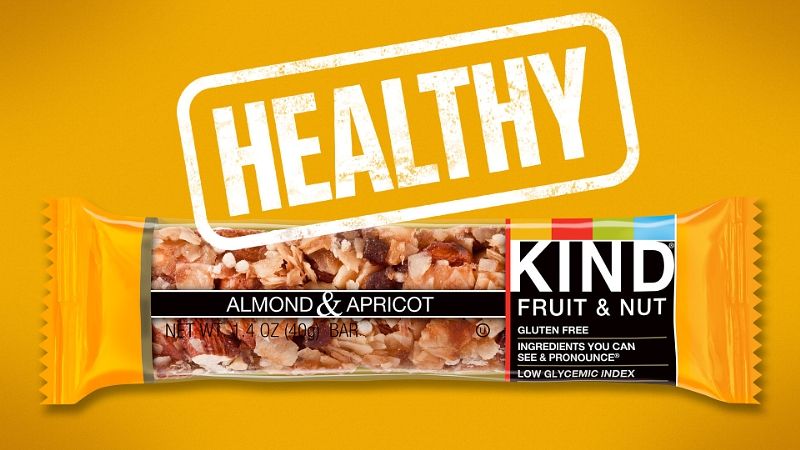What Does FDA’s KIND Decision Mean for the Future of “Healthy”?
FDA says KIND can continue to use the term “healthy” on its packaging because it is an expression of “corporate philosophy” and not a health claim. Will other companies follow suit?
Image provided by KIND.

It’s been more than a year since FDA first warned KIND against using the term healthy on its products, but earlier this month the snacks brand declared victory. In a reevaluation of its original objection, FDA announced on May 10 that KIND is indeed allowed to use the term healthy on its products because it is a statement of “corporate philosophy,” rather than a health claim. But in doing so, did FDA open up a loophole allowing more liberal use of healthy on food labeling?
The saga first began in March 2015, when FDA sent a warning letter to KIND in objection to its use of the phrase “healthy and tasty” on several KIND snack bars. FDA said KIND’s products exceeded the threshold of fat per serving outlined under FDA’s definition of “healthy” nutrient content claims, and therefore the products could not carry the term.
Following months of media scrutiny and ensuing lawsuits from consumer protection groups, KIND responded in December with a citizen petition urging FDA to update its “outdated” requirements related to food labeling. The petition noted that FDA’s current regulations for “healthy” claims-which focus on fat, saturated fat, sodium, and cholesterol-were last updated more than 20 years ago and may unjustly malign many ingredients now thought to be nutritious.
“Modern science tells us that the unsaturated fats in nutrient-dense foods like nuts, seeds, and certain fish are beneficial to overall health,” Joe Cohen, senior vice president of communications at KIND, tells Nutritional Outlook. “However, the current regulations preclude foods generally considered to be good for you-like nuts, avocados, and salmon-from being labeled as ‘healthy’ due to their inherent fat content. At the same time, the regulation allows items like fat-free chocolate pudding, some sugary cereals, and low-fat toaster pastries to carry the ‘healthy’ designation.”
Health Claims vs. “Corporate Philosophy”
KIND’s argument seems to have resonated. On May 10, FDA said that it would be reevaluating its regulations for “healthy” nutrient content claims, possibly by inviting public comments on the issue in the near future. And in the meantime, FDA said KIND can continue to use the term healthy on its product labeling because it is an expression of the company’s “corporate philosophy” and not a health claim, so long as the text is not included in the same panels as nutrition information.
“FDA has now affirmed KIND can use healthy on our wrappers again-just as we had it before,” Cohen says.
And beyond this case, FDA’s acceptance of healthy as a philosophy rather than a health claim could have big implications for the food and beverage industry.
“It does appear that the agency is recognizing that not every defined term that appears on a label is a claim,” says Kristi Wolff, special counsel for the law firm Kelley Drye & Warren LLP (Washington, DC). She adds that this decision provides “an important distinction for industry.”
A New Loophole?
Now that KIND has FDA’s approval to label its products as “healthy” thanks to its company’s philosophy, will other companies take advantage of this precedent to advertise their products as “healthy” without meeting FDA’s nutrient content requirements for actual health claims?
“I don’t think it’s intended to be a loophole but it could be used that way,” says Wolff. “Companies will want to carefully consider how they position product claims versus brand philosophy statements so that they are clear to consumers. To the extent that it is a loophole or brands aren’t careful in their use of terms, it would not be surprising to see class-action [lawsuits] filed or consumer interest groups target brands that may be using aggressive messaging.”
A New Definition of Healthy
Looking further down the road, if FDA were to revise its regulations for “healthy” claims, one likely new criterion might be sugar, Wolff explains.
“I would not be surprised if sugars and particularly added sugars were included as part of any new healthy definition,” says Wolff. “Likewise, we may see restriction on fat change given that we now know more about different kinds of fat than we did when the current regulations were finalized.”
Then again, there’s also the question of whether healthy is actually a powerful term in the eyes of consumers. KIND believes consumers are likely confused by the way healthy is currently defined, KIND’s Cohen explains, and the brand may not even continue using the term.
“To be honest, we’re unsure whether we’ll be adding healthy back to our packaging,” Cohen says. “This has been more of a matter of principle given our mission to make healthy and tasty snacking a way of life.”
Read more:
Red Flag: Dietary Supplement Makers, Do You Need a Finished-Product Study?
Stevia and Monk Fruit: What Makes a Natural Sweetener Natural?
New Nutrition Facts Panel Includes Added Sugars, Updated Serving Sizes
Michael Crane
Associate Editor
Nutritional Outlook Magazine
michael.crane@ubm.com
Prinova acquires Aplinova to further increase its footprint in Latin America
April 7th 2025Prinova has recently announced the acquisition of Brazilian ingredients distributor Aplinova, which is a provider of specialty ingredients for a range of market segments that include food, beverage, supplements, and personal care.










